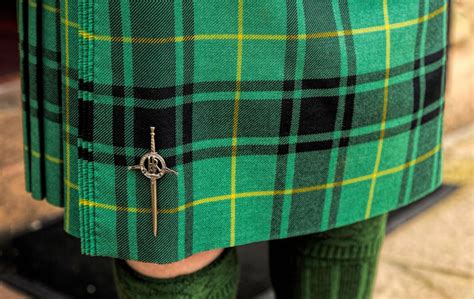Kilt Pin: Showcase Your Individual Style
The kilt pin—a seemingly small accessory—holds significant weight in Scottish culture and personal expression. More than just a functional fastener, it's a statement piece, a reflection of personality, and a subtle nod to heritage. This guide delves into the world of kilt pins, exploring their history, significance, and how to choose the perfect pin to showcase your individual style.
What is a Kilt Pin and Why Do You Need One?
A kilt pin is a decorative pin used to fasten the kilt's overlapping panels at the front. While not strictly necessary for all kilts (some have integrated fasteners), it serves both a practical and aesthetic purpose. Historically, kilt pins served as a functional way to secure the garment, but today, their primary role is often ornamental. They add a touch of personal flair and can elevate the entire look. Choosing the right kilt pin can transform your outfit from simply traditional to uniquely yours.
What are Different Types of Kilt Pins?
The variety of kilt pins available is vast, catering to a wide range of tastes and budgets. Some popular types include:
-
Clan Crest Kilt Pins: These pins feature the crest of a specific Scottish clan, allowing wearers to display their heritage or family connection. These are a popular choice for those with strong ties to a particular clan.
-
Animal Kilt Pins: From majestic stags to fierce Highland cattle, animal-themed pins offer a more symbolic and often rugged aesthetic. These are ideal for those who appreciate nature and a bolder look.
-
Scottish Thistle Kilt Pins: The thistle, Scotland's national flower, is a classic and elegant choice for a kilt pin. Its delicate yet strong design embodies traditional Scottish symbolism.
-
Celtic Knot Kilt Pins: Intricate Celtic knotwork designs offer a timeless and sophisticated feel. These pins often have a rich history and are a sophisticated choice.
-
Modern and Abstract Kilt Pins: Modern kilt pins break from tradition, offering innovative designs and materials. These are a perfect option for those seeking something unique and contemporary.
How Do You Choose the Right Kilt Pin for Your Style?
Choosing a kilt pin is a personal journey. Consider these factors:
-
Your Kilt: The color and pattern of your kilt will influence your choice of pin. A bold kilt might pair well with a simpler pin, while a more subdued kilt could benefit from a more eye-catching design.
-
Your Personal Style: Are you drawn to traditional designs or something more modern? Do you prefer subtle elegance or bold statements? Let your personal style guide your selection.
-
The Occasion: The formality of the event will also influence your pin choice. A simple thistle pin might be suitable for everyday wear, while a more elaborate clan crest pin might be reserved for special occasions.
-
Material and Durability: Consider the material of the pin; opt for sturdy and long-lasting metals like sterling silver or high-quality pewter.
What are Some Popular Materials Used in Kilt Pins?
Kilt pins are crafted from a range of materials, each contributing to the overall aesthetic and durability:
-
Sterling Silver: A classic and elegant choice, known for its durability and timeless appeal.
-
Pewter: A more affordable option that still offers a sophisticated look. Pewter can be beautifully detailed.
-
Stainless Steel: A very durable and resilient choice, ideal for everyday wear.
-
Gold: For a luxurious and high-end feel, gold kilt pins offer a striking statement.
Where Can I Find High-Quality Kilt Pins?
High-quality kilt pins can be found through a variety of sources, including specialty shops, online retailers, and even some traditional Scottish gift stores. It's important to ensure that the pin is well-made and durable to ensure it will last.
How Do I Attach a Kilt Pin?
Attaching a kilt pin is straightforward; simply pierce the overlapping layers of your kilt fabric and secure it firmly. Ensure the pin is securely fastened, but avoid excessive force to prevent damaging the fabric.
What is the Meaning Behind the Kilt Pin?
The meaning behind a kilt pin varies depending on the design. Clan crests represent heritage, while other designs may have symbolic meanings related to Scottish culture or personal preferences. Ultimately, the meaning is personal to the wearer.
How to Maintain Your Kilt Pin?
Proper maintenance will ensure your kilt pin remains beautiful for years to come. Gently clean your pin regularly using a soft cloth to remove any dirt or grime. Store it in a protective case or box when not in use to prevent scratches or damage.
In conclusion, the kilt pin is more than just a functional accessory; it's a way to express your individuality and celebrate your heritage. Choosing the right pin allows you to add a personal touch to your traditional attire, making it uniquely yours. Whether you choose a classic clan crest or a modern abstract design, your kilt pin becomes a cherished part of your outfit and your story.

